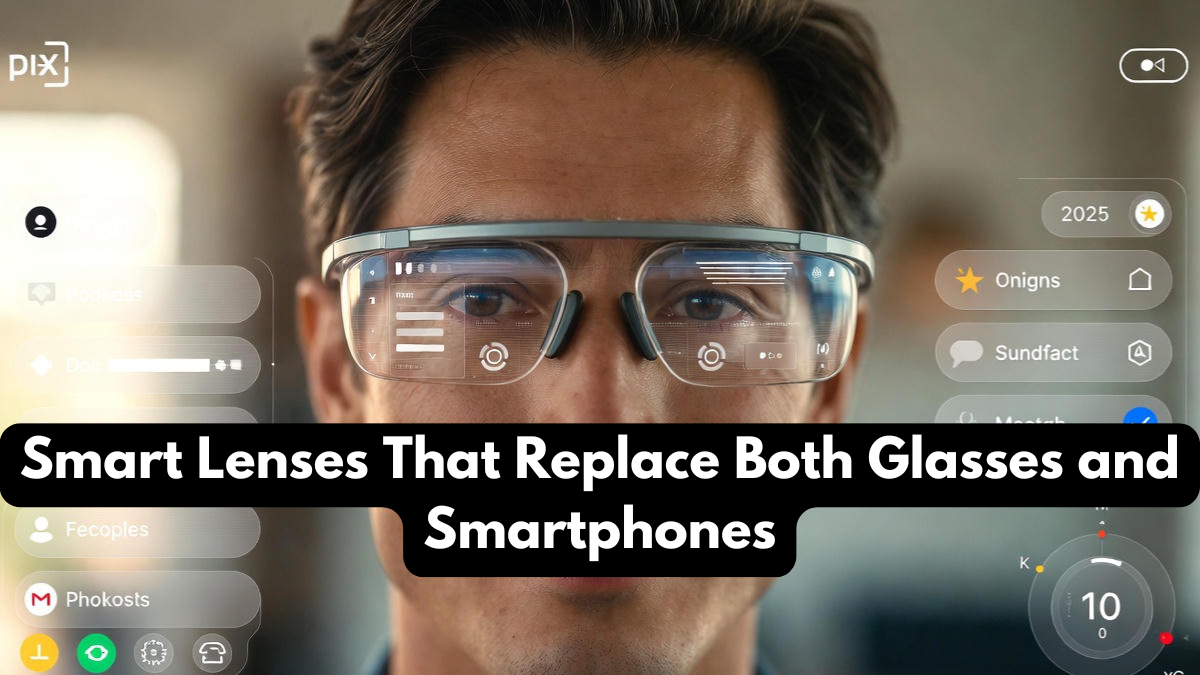The rise of smart lenses represents one of the most groundbreaking advancements in wearable technology. These ultra-thin, high-tech lenses are designed to fit comfortably on the eye while delivering powerful digital features once limited to smartphones and smart glasses. With the rapid evolution of AR contact lenses, users can receive notifications, access augmented reality overlays, track health metrics, and even record visual information—all without touching a screen. As innovation accelerates, smart lenses are shaping a future where digital information becomes seamlessly integrated with natural sight.

How Smart Lenses Work
At the core of smart lenses lies a tiny array of sensors, micro-LED displays, and wireless communication systems embedded within the lens material. Powered by microbatteries or energy-harvesting technology, these lenses project visual data directly onto the wearer’s field of vision. With AR contact lenses, augmented reality graphics overlay the real world, allowing users to see navigation arrows, translation text, health stats, or messages without looking at a phone.
These lenses are built using flexible circuits and micro-components that maintain comfort and safety. Eye movements are tracked using built-in sensors, while blinking gestures can be interpreted as user input. With the help of AR contact lenses, users can interact with digital interfaces using only subtle eye motions. This makes smart lenses a revolutionary hands-free, screen-free interface for the digital age.
Benefits of Smart Lenses for Everyday Life
The adoption of smart lenses brings a range of practical benefits that extend far beyond simple visual enhancement. When enhanced with AR contact lenses, they provide real-time information and augmented overlays that support navigation, communication, health tracking, and even entertainment.
Key benefits include:
- Seamless augmented reality experiences
- Instant access to notifications and messages
- Hands-free navigation and digital interaction
- Health monitoring via built-in biometric sensors
- Replacement for bulky devices like smartphones or glasses
- Realistic overlays enabled by AR contact lenses
- Improved accessibility for individuals with visual impairments
By merging natural sight with advanced AR features, smart lenses offer unparalleled convenience and technological integration, making everyday tasks easier and more intuitive.
Table: Traditional Wearables vs Smart Lenses
| Feature | Traditional Wearables | Smart Lenses |
|---|---|---|
| Display Type | External screen | Micro-LED via AR contact lenses |
| User Interaction | Touch/voice | Eye movement and gestures |
| Portability | Requires carrying | Completely invisible worn on the eye |
| Augmented Reality | Limited | Full immersive AR |
| Health Monitoring | Basic | Advanced biometric sensors |
| Convenience | Moderate | High, fully hands-free |
This comparison shows how smart lenses, supported by AR contact lenses, dramatically enhance functionality, portability, and real-world usability compared to traditional devices.
The Future of Augmented Reality Through Smart Lenses
As AR contact lenses evolve, the possibilities for immersive experiences will grow. In the future, smart lenses may offer holographic overlays, real-time 3D maps, or advanced training simulations for professionals. Doctors could view patient data during surgeries, engineers could inspect machinery with digital overlays, and students could experience education through augmented visual lessons.
Future smart lenses may also include AI-driven features such as emotion recognition, facial identification, or contextual suggestion systems. For example, lenses could automatically zoom in on distant objects, adjust brightness based on lighting, or translate foreign languages instantly. As AR contact lenses become more powerful and widely adopted, they will redefine how people interact with the physical and digital worlds.
Medical and Accessibility Impacts
Beyond convenience, smart lenses bring transformative value to healthcare and accessibility. Biometric sensors embedded within AR contact lenses can monitor glucose levels, detect eye pressure changes, or track hydration—making them invaluable for patients with chronic health conditions. For individuals with visual impairments, smart lenses may soon enhance vision, correct focus automatically, or provide AR-based navigation assistance.
Healthcare professionals are also exploring the use of smart lenses for early disease detection, diagnosing conditions using real-time tear composition analysis. This fusion of health monitoring and AR could revolutionize modern medicine and preventive care.
Conclusion
The advancement of smart lenses marks a new era of wearable tech—one where digital interfaces seamlessly blend with natural sight. With powerful capabilities enabled by AR contact lenses, these lenses provide hands-free communication, immersive augmented reality, enhanced navigation, and advanced health tracking. As the technology matures, smart lenses are poised to replace not only glasses but also smartphones, making digital interaction more intuitive than ever before. The future of vision is smart, connected, and deeply integrated with the digital world around us.
FAQs
How do smart lenses display digital information?
They use micro-LED displays and AR contact lenses technology to project graphics directly into the wearer’s field of vision.
Are smart lenses comfortable to wear?
Yes, smart lenses are designed with ultra-thin, flexible materials that feel similar to regular contact lenses.
What features do AR contact lenses offer?
AR contact lenses provide augmented reality overlays, notifications, navigation guidance, and biometric tracking.
Can smart lenses replace smartphones?
They may not replace them entirely yet, but smart lenses can handle many essential functions traditionally done on phones.
Are smart lenses safe for long-term use?
Most AR contact lenses undergo strict testing to ensure safety, comfort, and long-term compatibility with eye health.
Click here to know more.